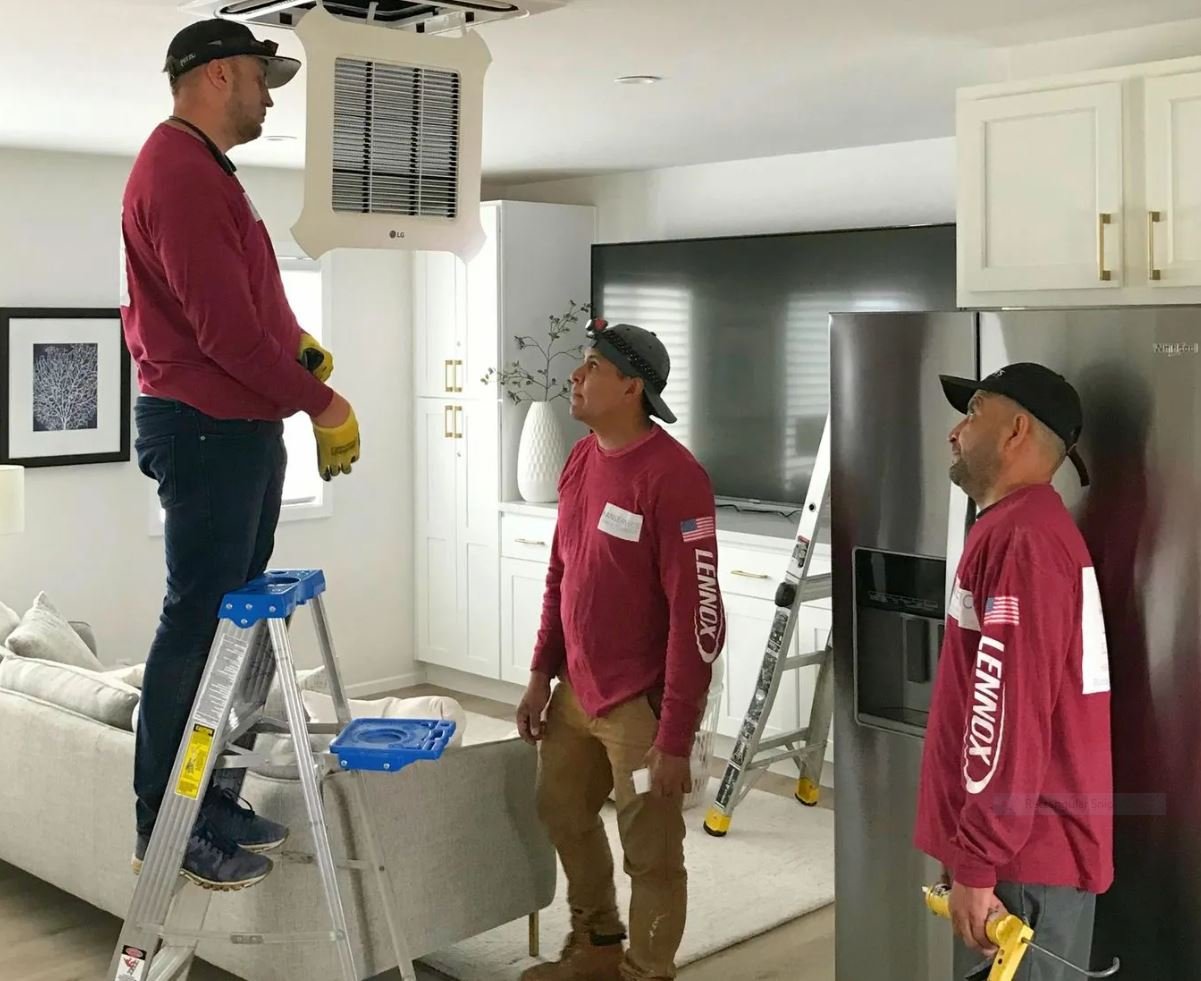A Complete Guide to HVAC Systems: Function, Types, Benefits, and Trends

Heating, Ventilation, and Air Conditioning (HVAC) systems are vital components of modern buildings. They not only provide thermal comfort but also help regulate indoor air quality and energy usage.
As our world becomes more focused on health, sustainability, and comfort, understanding how HVAC systems work and how to choose the right one is more important than ever.
Whether you’re a homeowner looking to improve your indoor environment or a business owner planning a facility upgrade, this in-depth guide will walk you through everything you need to know.
Understanding HVAC: Origins and Functionality
The Evolution of HVAC Systems
The concept of HVAC has evolved over centuries. Ancient civilizations used passive design strategies to manage temperature, such as ventilation towers in Persia or Roman hypocausts for underfloor heating.
Modern HVAC technology began taking shape during the 20th century, with milestones like the invention of air conditioning by Willis Carrier in 1902. Today, HVAC systems are complex and technologically advanced, integrating IoT, automation, and energy-efficient innovations.
Core Functions and How They Work Together
HVAC systems perform three main functions:
1. Heating: Furnaces, boilers, and heat pumps are used to raise indoor temperatures. They typically work by burning fuel or using electricity to generate heat.
2. Ventilation: This involves exchanging or replacing air to control moisture, odors, smoke, and airborne contaminants. Ventilation can be natural or mechanical.
3. Air Conditioning: Air conditioners and cooling systems remove heat and moisture from the interior, using refrigerants and compressors.
All three components must work in harmony to maintain a balanced and comfortable indoor environment.
Components of an HVAC System
An HVAC system typically includes:
- Furnace or Heat Pump: Converts energy into heat.
- Air Conditioner: Uses refrigerant to absorb and release heat.
- Ductwork: Carries air to and from different rooms.
- Ventilation Units: Facilitates airflow and introduces fresh air.
- Thermostat: Controls the system by regulating temperature settings.
- Air Handlers and Blowers: Move air throughout the duct system.
- Filtration Systems: Capture dust, allergens, and pollutants.
- Smart Controls and Sensors: Modern systems often include AI-driven analytics to optimize efficiency.
Types of HVAC Systems
Choosing the right HVAC system is not a one-size-fits-all process. It depends on your climate, building structure, energy goals, and budget. Here’s a closer look at the main types:
Central HVAC Systems
Central systems are popular in large residential and commercial properties. They use a centralized unit and extensive ductwork.
Use Case: Multi-room buildings that require uniform temperature control.
Pros: – Consistent comfort across rooms – Better air quality with centralized filtering
Cons: – Expensive to install – High maintenance if ductwork is old or leaking
Ductless Mini-Split Systems
These systems consist of an outdoor compressor and one or more indoor units, providing zoned climate control without ducts.
Use Case: Homes without ductwork or specific room installations.
Pros: – Easy installation – High energy efficiency
Cons: – High upfront cost – Visible indoor units
Split Systems
Split systems separate indoor and outdoor units. Common in residential buildings.
Use Case: Standard homes with space for indoor and outdoor units.
Pros: – Affordable and efficient – Easy to repair individual parts
Cons: – Requires space for both units
Hybrid Systems
Combines the energy efficiency of a heat pump with the power of a gas furnace.
Use Case: Regions with varying seasonal temperatures.
Pros: – Smart fuel switching for savings – Lower carbon footprint
Cons: – More complex installation
Packaged HVAC Units
All components are housed in a single unit, often installed on rooftops or ground-level slabs.
Use Case: Smaller commercial properties or homes with no basement.
Pros: – Saves space – Easier installation
Cons: – Limited energy efficiency options
Benefits of HVAC Systems for Residential and Commercial Use
Energy Efficiency
Modern HVAC systems use variable-speed motors, smart thermostats, and zoning to cut down energy usage. ENERGY STAR-rated systems can reduce energy bills by up to 30%.
Healthier Indoor Air
Proper ventilation and air filtration help reduce the risk of asthma, allergies, and airborne illnesses.
Enhanced Comfort and Productivity
Consistent temperature and humidity improve comfort and focus, especially important in workplaces and schools.
Environmental Responsibility
Eco-friendly refrigerants and high-efficiency ratings contribute to sustainability efforts.
Increased Property Value
Energy-efficient, modern HVAC systems are a significant selling point for residential and commercial properties.
How to Choose the Right HVAC System
Climate-Specific Considerations
- Cold Climates: High-efficiency furnaces and dual-fuel systems work best.
- Hot Climates: High-SEER air conditioners or heat pumps are optimal.
- Humid Regions: Systems with dehumidifiers help control moisture.
Building Type and Size
Larger buildings often require multi-zone systems or advanced control systems. Smaller homes may benefit from ductless or split systems.
Installation and Operating Costs
Consider both the initial investment and long-term operational costs. Rebates and tax credits may apply for energy-efficient models.
Energy Ratings and Certifications
Look for: – SEER (cooling efficiency) – AFUE (heating efficiency) – ENERGY STAR label
Smart Features
Consider compatibility with smart home ecosystems and features like programmable thermostats, diagnostics, and remote access.
Common HVAC Problems and Maintenance Tips
Frequent Issues
1. Dirty Filters: Reduce airflow, strain the system.
2. Refrigerant Leaks: Affect cooling, require expert repair.
3. Thermostat Failure: Miscommunication between system and user settings.
4. Clogged Drains: Cause leaks and water damage.
5. Pilot or Ignition Issues: Lead to inadequate heating.
Maintenance Checklist
- Change filters monthly or as recommended.
- Schedule seasonal tune-ups.
- Clean coils, ducts, and blower components.
- Inspect insulation and duct integrity.
- Check thermostat calibration.
Regular servicing extends equipment lifespan, reduces repairs, and improves performance.
Importance of Professional Installation and Servicing
Improper installation is one of the leading causes of HVAC inefficiency and failure. Professional technicians:
- Ensure correct sizing and duct design
- Verify code compliance
- Optimize system performance
- Provide warranty-backed work
Annual servicing helps detect small issues before they become costly problems.
For trusted service and expert advice, visit www.kan-service.com/hvac.
Emerging Trends in HVAC Technology
Smart Thermostats and AI Controls
Modern systems use machine learning to adapt to your schedule, weather patterns, and energy prices. Brands like Ecobee and Nest are leading the market.
IoT-Enabled Monitoring
Smart sensors track air quality, filter status, and energy consumption in real time, sending alerts to users or service providers.
Zoned Heating and Cooling
Zoning allows different areas of a home or building to be heated or cooled independently, saving energy and improving comfort.
Variable-Speed Compressors
These adjust output to current conditions instead of operating at full power all the time, reducing energy waste.
Eco-Friendly Refrigerants
Regulations are phasing out older refrigerants. New models use R-32 and similar options that are better for the environment.
Integration with Green Building Standards
HVAC systems now play a major role in LEED-certified buildings and other sustainable construction practices.
Conclusion
A well-functioning HVAC system is a critical part of any building. From energy efficiency to improved health and comfort, the right system offers numerous benefits. With advancing technologies and smart solutions, HVAC systems are becoming more efficient and user-friendly than ever.
If you’re planning to install, upgrade, or service your HVAC system, be sure to consult with professionals who can help you make the right choice for your specific needs.
Ready to Get Started?
Explore HVAC solutions tailored to your property and climate by visiting www.kan-service.com/hvac. Their team of certified technicians offers expert installation, maintenance, and system design support for homes and businesses alike.




